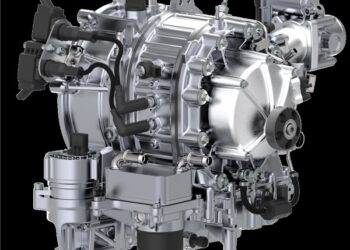Stellantis, the automotive giant formed from the merger of FCA and PSA, finds itself in a precarious situation on both sides of the Atlantic. In the United States, the company faces increasing dissatisfaction from dealers who claim the “degrading” state of the American brands is leading to an industry “disaster.” But while the U.S. troubles mount, Europe presents a different challenge altogether: a sluggish transition to electric vehicles (EVs) amid waning government incentives and looming emission targets.
In Europe, automakers are under pressure to drastically reduce their fleet emissions by 2025. With internal combustion engine (ICE) vehicles still significantly cheaper than their electric counterparts, companies like Stellantis are feeling the pinch. Without aggressive EV sales, these companies risk massive fines for not meeting regulatory requirements. Though cleaner combustion engines and hybrids offer some relief, the real emissions cuts can only come from a booming EV market—something Europe is currently struggling to sustain.
Incentive Reductions Stifle EV Demand
One of the primary obstacles for Stellantis and other automakers is the reduction or outright removal of government incentives for EV purchases across Europe. These incentives were once a major driver of EV adoption, but their reduction has thrown the market into disarray. Stellantis CEO Carlos Tavares has bluntly stated, “To stay alive, we need to achieve cost parity between electric cars and thermal cars, but governments have decided to reduce purchase incentives, and this is holding back the market.
The reality of the situation is reflected in dwindling sales. Production of the Fiat 500e, one of Stellantis’ flagship EVs, has been paused for four weeks due to weak demand. According to the European Automobile Manufacturers Association (ACEA), the market share of fully electric cars fell from 14.3% to 13.8% in the first seven months of 2024 in the European Union, the UK, and EFTA countries. This downturn in sales is hampering efforts to decarbonize fleets as automakers scramble to adapt to stricter regulations.
Tavares Stands Firm on Emission Targets
Despite these challenges, Tavares remains firm that delaying the EU’s stricter CO2 targets would be a mistake. Speaking to Agence-France Presse, he remarked, “It would be surreal to change the rules now.” Tavares underscored the urgency of the climate crisis, pointing out that “half of Portugal is burning,” a sobering reminder of the effects of global warming.
Stellantis, according to Tavares, is prepared to meet the upcoming emissions regulations. “My cars are ready, my people are ready, and our factories are ready. Why delay?” he said, highlighting that the company has taken all the necessary steps to comply with the new rules. Stellantis’ focus is now on bridging the cost gap between electric and thermal cars—a task made even more challenging in a market where consumer interest in EVs appears to be waning.
Global Ramifications of Europe’s Emission Policies
What happens in Europe will have far-reaching effects across the globe. The EU’s stringent emissions regulations could lead to the demise of gas-powered models worldwide if automakers cannot reach the necessary economies of scale. The potential ban on new gasoline and diesel cars by 2035 has already pushed the industry toward carbon-neutral synthetic fuels. However, this transition presents another costly hurdle for companies like Stellantis, which must innovate while battling inconsistent consumer demand and fluctuating government support.
Stellantis, and the automotive industry at large, are now at a critical juncture. With U.S. dealers frustrated and European EV sales slowing, the company faces a tough battle on multiple fronts. The question remains whether the conglomerate can weather this storm of regulatory pressure, market uncertainty, and internal discontent to emerge stronger—or face a potential reckoning.










